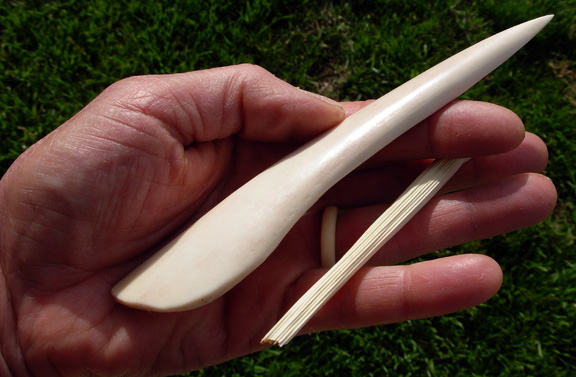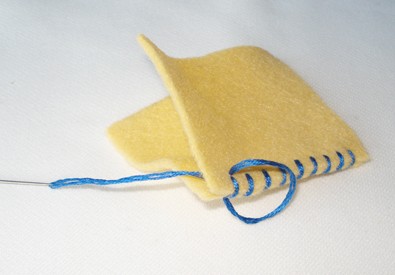We as people tend to take things for granted. Things from our bodies, to our minds, even down to the clothing on our backs.
If you’re in civilized America, as I trust you must be, I would assume you are wearing clothes of some kind. (Unless you’re going through a nudist rebellious stage. If so, the more power to you, and rock on)
But clothing! Have you ever stopped to gape at its wonder? Did you ever think of how clothes ever came to be?
I’ll answer that question for you, whether you’ve asked it or not.
It’s all thanks to hands.
Let’s take a brief look at the awesome role hands have played in keeping us warm and not-naked over the spans of time, shall we?
It is believed that humans began to wear pelts and skins for warmth around 60,000 years ago. At this point, they didn’t actually attach them to one another, they simply wrapped them around themselves or tied a cord around them to keep them on.
All of that changed about 15,000 years later, when the people of central Asia wanted warmer, stronger clothes for the frigid temperatures there. It was then that the awl was invented: a tool with a sharp end used to poke holes in cloth so that a thread, string or wire of some sort could be pulled through them and bind them together.
Around 40,000 B.C., the first awl with a hole for string was conjured, and so the first needle was born! Needles were initially made out of bone, but eventually (around 3,000 years ago) began to be made from metal as we see today.
And so as you see, the hands have been very busy on this particular endeavor for thousands of years. But our tale doesn’t end there!
Granted, most clothing is no longer handmade, which is really a good thing. Hand sewing objects takes a tremendous amount of time (even for a master seamstress) compared to using an electric powered sewing machine.
However, the art is not completely lost, and is really much simpler than a lot of people may think! When habitual, it can become a relaxing act that used to sew on buttons, patch your pants, or even create incredibly heart-warming gifts for the ones you love.
Before you sew, you simply need to get some thread, a needle, and some cloth. Loop the thread through the needle, tie a knot in the end, and poke it through your fabric!
Two basic types of stitches that can be easily learned by anyone are the straight stitch, and the whip stitch.
The straight stitch, pretty much summarized by its name, is the most basic stitch of all. It is accomplished by weaving the needle in and out of the material in a straight line.
The whip stitch is a favourite of many as well, and can be used to conveniently sew on patches, or to close the hem of pants, a skirt, etc. If you flip your material and sew on the opposite side (e.g. the inside of a shirt), the thread will not be seen from the other side, and is therefore a seamless fix. Very desirable.
But it also makes a pretty cool fashion statement if you sew on a patch or hem from the outside.
Sewing probably would never have been invented had the hands not been around first. Thanks to the advent of the sewing machine, it is not completely impossible to sew without them anymore.
However, as anyone who has ever used one would know, it still would be incredibly difficult without them. And hand sewing would never even be an option.
That’s it for this week. Love your hands, everyone! And don’t fear the needle and thread, they’re your frands.

Hands up, represent the sloth community






You made various good points there. I did a search on the subject matter and found the majority of persons will consent with your blog.
The difference between an online degree and a regular one
is the venue with which they are taught and learned.
There are number of good opportunities for those students who are interested in business
or they want to study business at the level of undergraduate.
If the education you are seeking has true value and importance to you,
an online degree might not be a good choice.
Hey, can you sew that patch on my backpack and also help me sew the straps on pretty much every dress I own?
I like how you talked about the different types of stitches! I like the whip stitch, I think it’s the most interesting one to see used, since it adds some character to whatever is being sewn.
I am still afraid of the needle and thread, but you make it seem a little less intimidating to sew!